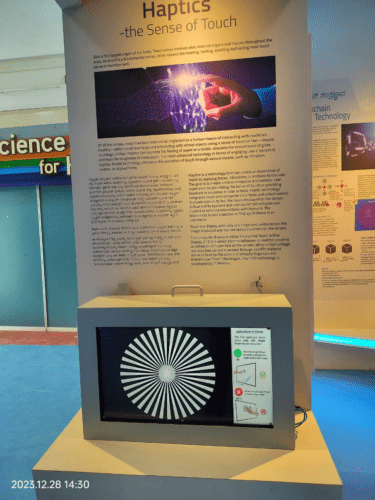The Future of Touch with IIT Madras’ iTad, a Touchscreen Technology Allowing Users to Feel Textures in Images.

Researchers at the Indian Institute of Technology Madras have created an innovative touchscreen display technology that enables users to experience textures from images as their fingers glide over the touch surface. This is a significant advancement from existing touchscreen technologies, which are limited to detecting the position of finger touches.
Named ‘iTad,’ short for Interactive Touch Active Display, this technology represents a breakthrough in touch display innovation. Utilizing specialized software, the researchers have successfully engineered a variety of tactile experiences, including sharp edges, switch-like sensations, and a diverse array of textures from sleek to coarse. This innovation ushers in a novel dimension of interaction on otherwise smooth physical surfaces.
This technology, specializing in AR/VR/MR and Haptics, has been developed and patented by the Experiential Technology Innovation Center (XTIC) at IIT Madras.
The iTAD, known as ‘Feel the Display’, was officially launched at the Visvesvaraya Industrial & Technological Museum (VITM) in Bengaluru on December 29, 2023. The inauguration ceremony was led by the Executive Director of BEL and the Director of VITM.
The technology underpinning the iTAD is innovative and patented, and it’s currently being adapted for immediate practical applications. At the core of iTAD is the concept of “Electroadhesion,” which involves creating fingertip adhesion through specialized computer programs. This is achieved by passing a high voltage but very low current through select materials, resulting in the attraction of the fingertips to the surface. Consequently, users can physically “feel” the images displayed, which is the fundamental science behind this technology.
The development of the iTAD technology encompasses challenges at two primary levels: hardware and software. On the hardware front, the engineering challenge lies in identifying the suitable material capable of generating sufficient electroadhesion to attract fingertips. This requires meticulous material selection and testing to ensure the desired tactile response. Regarding software, the challenge involves developing computer programs or algorithms that can effectively modulate the electroadhesion in response to the images shown on the computer screen. These algorithms are crucial for accurately translating visual elements into tangible sensations, enabling a seamless and interactive user experience.






